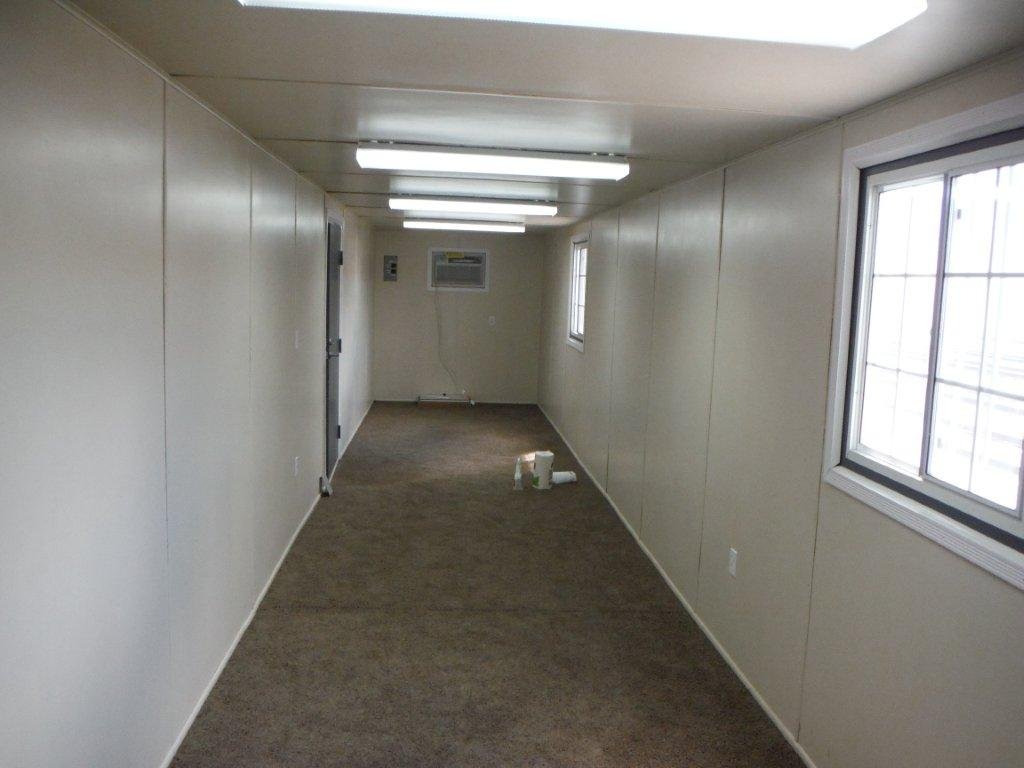Insulating Containers - What are your options?
If you have experience with any of these, I am strongly encouraging people to comment below - add pictures if you'd like! I know a lot of you have tackled this and your advice is great appreciated!
Traditional Roll Insulation
This is the style most do-it-yourself-ers are used to. Frame in the container like you would a traditional insulation project, however, you can put your 2x4's flat against the wall so they protrude into the interior of the container only 2" instead of 4". Roll in the insulation and cover with whatever paneling/interior walling you would like. The pros to this one - you might have already done a project like this, making it easy to figure out how to do it. The cons - it does take up a bit of space, you have to deal with roll insulation and the framing has to be cut perfectly to fit in perfectly into the height of the walls since you can't nail them into the wall of the container. Also, you may need to put in a vapor barrier to prevent condensation, which is just one more step.

Spray Foam Insulation
This is quickly becoming my go-to method of insulation. Some framing is still necessary here, but spray foam insulation is applied as the walls are installed to keep it inside. The pros - you can get insulation into every nook and cranny in the corrugation of the walls, increasing your r-factor and reducing condensation, and a good r-factor can be reached with narrower walls. The cons - it takes a little more know-how to get the application just right (however there are companies that will do that part for you) and the cost can be a little higher than traditional roll insulation. Overall, I think it is a good mix of price and value.
Foam Board Insulation
Foam board insulation is a product that we sell and is available through most container sellers. It consists of 2" of foam board with a thin panel on one side to be the interior walls of the container. This is usually a laminated material that can be easily wiped clean with a cloth. The boards come pre-cut to fit into the walls, ceiling and doors of the container and installation is, in theory, relatively easy. However, installation does require using some clips that are adhered to the inside of the container and the ceiling panels keep the walls panels in place. The door panels can be a little trickier to install. The pros - it is a an all-in-one product so you don't need to find paneling for the interior walls, the kits come with everything you need for installation. The cons - it takes up a full 2" for a very medium-level r-factor and can be a little clunky to install for novices.
Structural Insulated Panels (SIPs)
Structural Insulated Panels (SIPs) are panels designed to provide both structure to walls as well as insulation. They are mde with OSB panels, a foam core (or other material such as plywood, cement board, etc) and a connector piece for putting them together. They are by far the strongest option here, and are widely used in modular homes. I do not have any experience in using them, however, I think that the additional structural support might be useful in projects where large portions of the container are going to be cut out and additional structure needs to be added to the remaining walls. The pros - they are very strong and provide a high r-factor. The cons - they are expensive and heavy, which make them a little more difficult to work with.
Interior walls
Related to insulation is what to use for your interior walls. The beauty of modifying your container is that really, anything you want pretty much will work. Here are some common ones: plywood/OSB, thin wood paneling, FRP panels, fabric-covered fiberglass wall panels, drywall, steel plating and literally anything else you can get to stick to your framing. A stroll through your local big box hardware store can give you endless inspiration. When picking what is going to be right for you, think about a couple of things to consider:
-
How will you be using the space? If it is going to be an office, maybe going with the cloth interior of fabric-covered fiberglass wall panels would be good. Do you need to clean it often? Then FRP might be best. Industrial use that you need steel, there you go.
-
What is your budget? Some options are more expensive than others. Plywood is going to be cheaper than steel plating.
Tags:
container walls, container insulation, spray foam insulation, Structural Insulated Panels - SIPsJanuary 30, 2014

